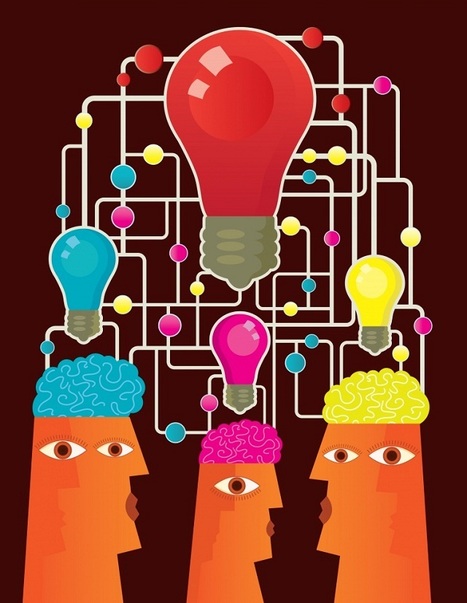Instead of focusing our concerns on technology as an aid to plagiarizers, we should focus on its ability to foster creativity and collaboration, says Jen Carey.
Get Started for FREE
Sign up with Facebook Sign up with X
I don't have a Facebook or a X account
 Your new post is loading... Your new post is loading...
 Your new post is loading... Your new post is loading...
|
Ashleigh Dawley's curator insight,
September 30, 2013 4:18 PM
Thought this was a great way to get thinkig about teams and different ways to form them. Uses funn interactive and proactive ways to build a team.

Channylt's curator insight,
April 7, 2014 10:56 AM
Great tips on how to facilitate collaborative learning. Learners that work collaborativley are engaged in their learning and have better learning outcomes. 
Marina Cousins's curator insight,
April 10, 2014 8:06 PM
I liked this article, as it highlighted to me the importance of collaborative learning is much better than individual learning. As I have mentioned several times, the learning and assessment that takes place within my workplace has a strong behaviourist foundation of learning and repeating key words and actions to pass an assessment (it is a very individual approach to learning).
Many of my colleagues view this experience of learning & assessment in a negative way. What are some of the ways to overcome this negative view of learning?
After reading this article, I will seriously consider using a collaborative learning style within my workplace (if I get the opportunity). The advantage of using real world problems or clinical incidents is that it offers the learner the opportunitity to improve their critical thinking skills and problem-solving ability.
Therefore, by using collaborative learning you can apply the following learning theories of cognitivism, constructivism, objectivism. 
Hazel Kuveya's curator insight,
April 10, 2014 9:22 PM
Keeping the groups at moderate levels will ensure an effective exchange of ideas and participation in all involved, I can echo the same statement that two heads are better than one. It is also interesting to learn that collaborative teams attain higher level thinking and preserve information for longer periods as compared to their individual counterparts., yes the use of technology makes collaborative learning manageable. |













As teachers we know how easy it is for students to plagiarize today. We are asked to have students work collaboratively and use tools where students may see others thoughts. How to we deal with these issues, the need for collaboration and using tools which promote this and the issue of students plagiarizing? And when it comes to assessment how do we ask students to collaborate yet also demand that they not plagiarize?
This post explores these issues and discusses how to "transform cheating into collaboration"? There is also a question that each of us might ask ourselves (and I suspect many of us have): If you can Google an answer is it a good question for an assessment?